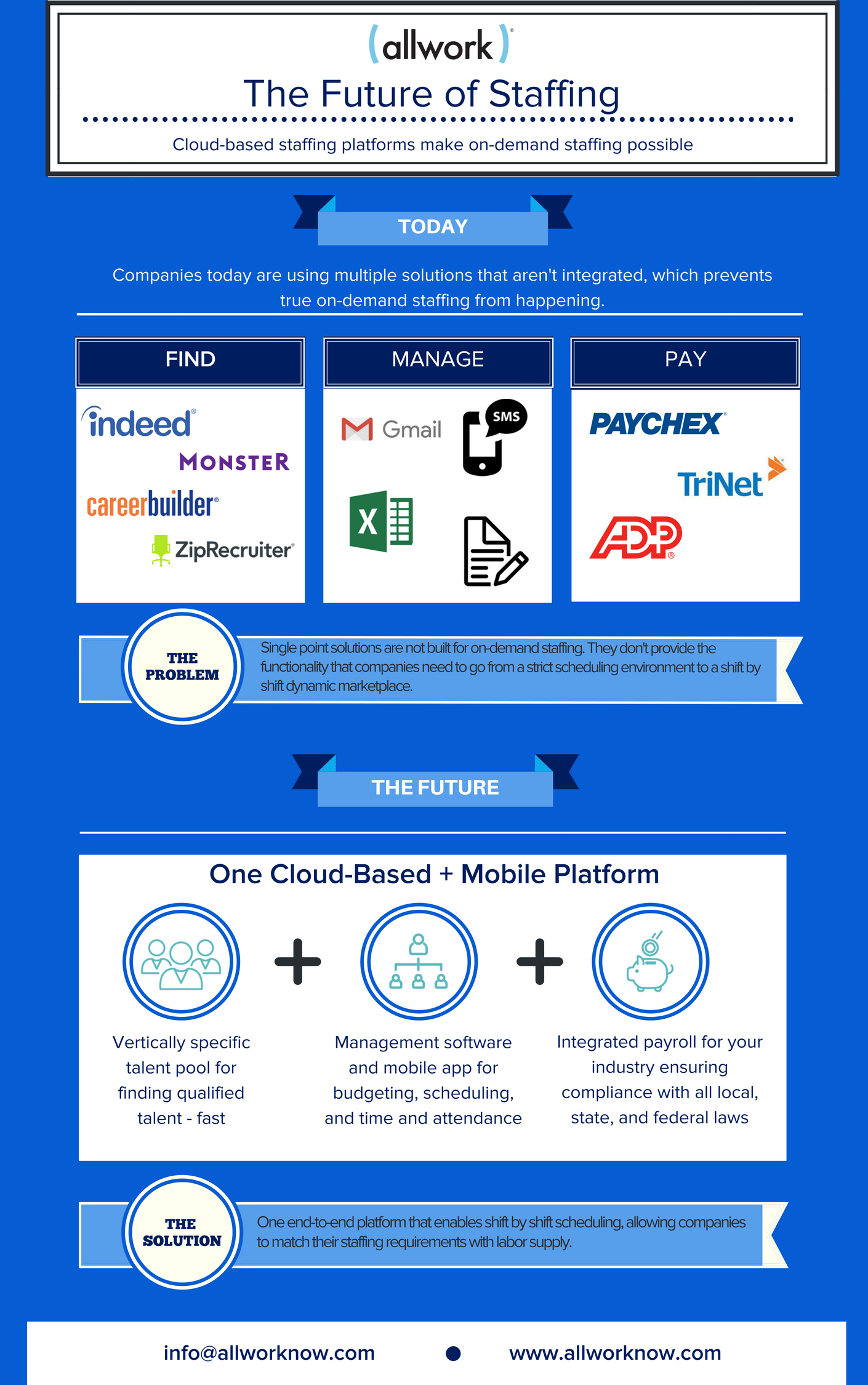
Many companies today are using multiple solutions for their staffing needs that aren’t integrated with each other. From paper schedules to excel spreadsheets, some are still relying on out-dated forms of management for their staffing solutions. This lack of technology prevents any kind of true on-demand staffing from happening. If managers need to use one resource for finding top talent, one for managing their budgets, one for scheduling talent and yet another for paying their talent, there is no way that efficient and timely staffing can happen.
The need to streamline and optimize staffing processes has reached a critical level with the shift of the workforce to a more flexible, on-demand model. According to a recent Workforce HR Report, 70% of managers are already utilizing flexible or contingent talent, including freelancers, temp, and agency workers, while HR managers anticipate that work done by contingents will increase by 179% in the next 10 years. It’s more important than ever for companies to transform their scheduling experience in order to adapt to this changing workforce.
On-demand staffing is inevitable:
- 40% of the US workforce freelancing by 2020.
- The shortage of hourly workers is becoming acute.
- Workers now value flexibility over income.
- Staffing is the last opportunity for cost savings in many industries.
Matching employees with the shifts they want and employers with the staffing they need is not possible as long as solutions like rigid rosters and paper schedules are the chosen methods for scheduling and managing. All of the single point solutions at a company’s disposal today don’t provide the functionality they need to go from a strict schedule environment to a shift-by-shift dynamic marketplace. But technology is changing that, and the right platform can drive benefits on both sides of the equation.
It’s clear that in order to optimize their staffing process, companies need to move to an on-demand staffing model. To do so, they need one cloud-based platform that will provide them with all of the resources they need in one place. By being able to tap into a vertically specific talent pool, hiring managers can find qualified talent fast while management software gives them the ability to schedule talent on-demand, manage their budgets, and process payroll — all in the same place.
One end-to-end platform is the key for companies to match their staffing requirements with their labor supply. In doing so, they’ll be able to optimize their workforce and save both time and money by reducing overscheduling and time spent by upper management on administrative tasks.



